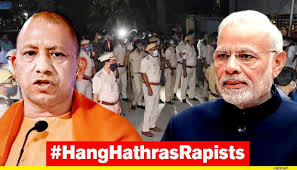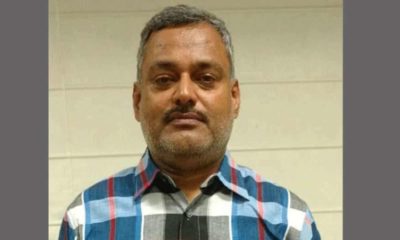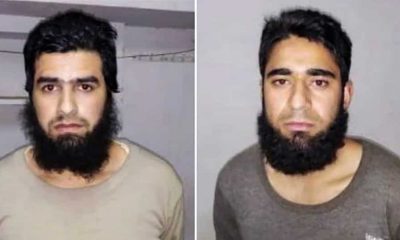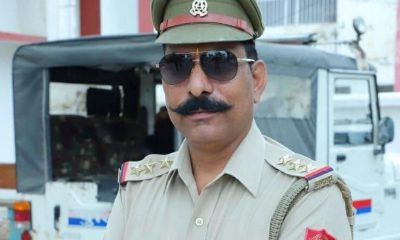Feature
Suicides by 2 IPS officers in 5 months rattles Uttar Pradesh Police
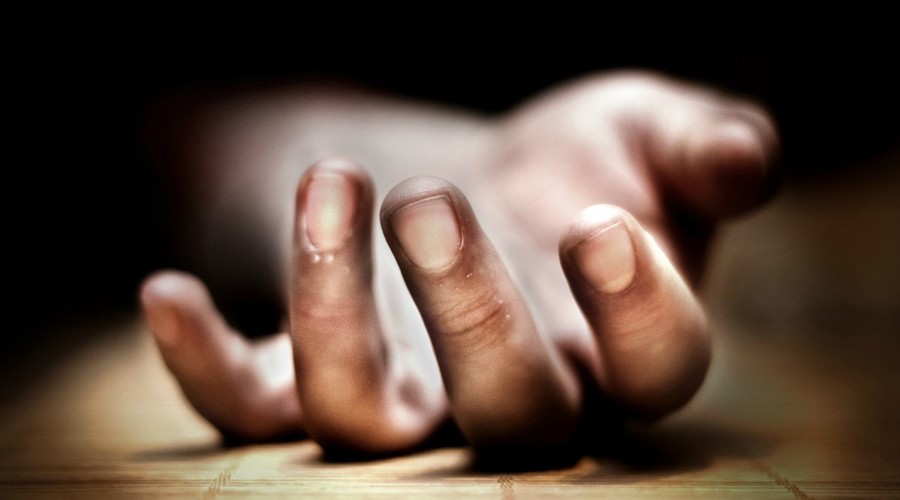
Suicides, between May and September, by two of its bright officers — one with the anti-terror squad (ATS) and the other posted as SP (East) in Kanpur — has rattled the Uttar Pradesh Police, one of the largest such forces in the country.

It also raises the question — as it does for other non-military forces around the nation — whether the men in khaki are overworked, stressed from having to meet unrealistic targets from political bosses and unable to balance their professional and personal lives.

Rajesh Sahni, a highly-decorated Indian Police Service (IPS) officer, posted as an Additional SP with the ATS, pulled the trigger on himself at his office in the upscale Gomtinagar neighbourhood of the state capital on May 29. Surendra Kumar Das, a 2014 batch IPS officer, swallowed an overdose of sulfa drugs on September 6 and died three days later. The reasons for taking the extreme step are not known yet, but colleagues say both were “stressed”, albeit for “different reasons”.
Director General of Police (DGP) O.P. Singh, who on September 8 visited the 30-year-old Das at a private hospital in Kanpur where he was battling for life, conceded that the force was in a “high level of stress”. While officers have for long been privately complaining of “heavy volume of work”, “endless work hours”, “ruined personal lives” and “demanding bosses”, the pressure on the police suddenly seems to have pushed people to the brink.
With the state government setting targets for the force so as to portray itself as a “different government which hounds out criminals”, a senior officer told IANS on condition of anonymity that “working was tougher than ever before”. The suicides were a fallout of such pressures, he added.
“The political class, past and present, fails to understand the situation on the ground and the difficulties we face… it is madly after results,” rues another SSP-level officer in eastern Uttar Pradesh. The desperation, be it personal or professional, “to get out of the rut even if it means dying” can be gauged from the fact that Das “Googled ways to die”, a colleague said.

Former DGP Vikram Singh, who served for three long years under a “tough and demanding Mayawati” also admited that high political stakes force policemen to get stressed. “The police, in any case, has been very overworked and growing crimes, shifting crime patterns and modus operandi add to our woes,” he added.
He regretted that owing to a host of issues like no holidays, lack of sleep, the sinking feeling of failure, public treatment of policemen with contempt, indifference of political bosses and almost no connect with superiors has led to an alarming fall in tolerance levels.
“We, as young officers, have worked with the likes of the legendary B.S. Bedi; they all were so connected and concerned about the well-being of their subordinate officers… sadly the joint family of police has broken,” Vikram Singh added.
Another former DGP, K.L. Gupta, said the police has become a “Draupadi” who is answerable to politicians, the public, RTI queries, courts and human rights activists.
“There certainly are forces that pull down one’s self-esteem and family discord is one reason for such steps,” he told IANS.
Brij Lal, another former DGP and currently chairman of the Uttar Pradesh SC/ST Commission, said he knows of many cases since 1981 when police officiers took the extreme step due to marital discord. He, however, added that the force was certainly overworked and needed solutions fast and quick.
Sri Ram Arun, another decorated and very respected former DGP, said that pulls and pressures in the police service “now-a-days is more than ever before”.
“There is political pressure from all sides; officers are transferred on a whim,” he maintained, adding that to sort out the mess, the policemen need to stand up against wrongs, and balance their personal and professional lives — while the political masters need to understand that “better policing can only be achieved through a better and cordial relationship with the police and its officers”.
Many serving officers said they were concerned about the spate of such sad events and suggested that annual mental profiling, as is the case in police forces in many countries, and even in some para-military forces, was one way to prevent such incidents. They also felt that old-style policing and better camaraderie between the seniors and junior staff was a must as well, along with a certain improvement in working conditions.
Entertainment
Meghalaya Reserves Legalized Gambling and Sports Betting for Tourists

The State Scores Extra High on Gaming-Friendly Industry Index
Meghalaya scored 92.85 out of 100 possible points in a Gaming Industry Index and proved to be India’s most gaming-friendly state following its recent profound legislation changes over the field allowing land-based and online gaming, including games of chance, under a licensing regime.
The index by the UK India Business Council (UKIBC) uses a scale of 0 to 100 to measure the level of legalisation on gambling and betting achieved by a state based on the scores over a set of seven different games – lottery, horse racing, betting on sports, poker, rummy, casino and fantasy sports
Starting from February last year, Meghalaya became the third state in India’s northeast to legalise gambling and betting after Sikkim and Nagaland. After consultations with the UKIBC, the state proceeded with the adoption of the Meghalaya Regulation of Gaming Act, 2021 and the nullification of the Meghalaya Prevention of Gambling Act, 1970. Subsequently in December, the Meghalaya Regulation of Gaming Rules, 2021 were notified and came into force.
All for the Tourists
The move to legalise and license various forms of offline and online betting and gambling in Meghalaya is aimed at boosting tourism and creating jobs, and altogether raising taxation revenues for the northeastern state. At the same time, the opportunities to bet and gamble legally will be reserved only for tourists and visitors.
“We came out with a Gaming Act and subsequently framed the Regulation of Gaming Rules, 2021. The government will accordingly issue licenses to operate games of skill and chance, both online and offline,” said James P. K. Sangma, Meghalaya State Law and Taxation Minister speaking in the capital city of Shillong. “But the legalized gambling and gaming will only be for tourists and not residents of Meghalaya,” he continued.
To be allowed to play, tourists and people visiting the state for work or business purposes will have to prove their non-resident status by presenting appropriate documents, in a process similar to a bank KYC (Know Your Customer) procedure.
Meghalaya Reaches Out to a Vast Market
With 140 millions of people in India estimated to bet regularly on sports, and a total of 370 million desi bettors around prominent sporting events, as per data from one of the latest reports by Esse N Videri, Meghalaya is set to reach out and take a piece of a vast market.
Estimates on the financial value of India’s sports betting market, combined across all types of offline channels and online sports and cricket predictions and betting platforms, speak about amounts between $130 and $150 billion (roughly between ₹9.7 and ₹11.5 lakh crore).
Andhra Pradesh, Telangana and Delhi are shown to deliver the highest number of bettors and Meghalaya can count on substantial tourists flow from their betting circles. The sports betting communities of Karnataka, Maharashtra, Uttar Pradesh and Haryana are also not to be underestimated.
Among the sports, cricket is most popular, registering 68 percent of the total bet count analyzed by Esse N Videri. Football takes second position with 11 percent of the bets, followed by betting on FIFA at 7 percent and on eCricket at 5 percent. The last position in the Top 5 of popular sports for betting in India is taken by tennis with 3 percent of the bet count.
Local Citizens will Still have Their Teer Betting
Meghalaya residents will still be permitted to participate in teer betting over arrow-shooting results. Teer is a traditional method of gambling, somewhat similar to a lottery draw, and held under the rules of the Meghalaya Regulation of the Game of Arrow Shooting and the Sale of Teer Tickets Act, 2018.
Teer includes bettors wagering on the number of arrows that reach the target which is placed about 50 meters away from a team of 20 archers positioned in a semicircle.
The archers shoot volleys of arrows at the target for ten minutes, and players place their bets choosing a number between 0 and 99 trying to guess the last two digits of the number of arrows that successfully pierce the target.
If, for example, the number of hits is 256, anyone who has bet on 56 wins an amount eight times bigger than their wager.




